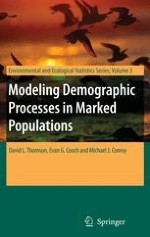2009 | OriginalPaper | Buchkapitel
Evaluation of the Linkage Disequilibrium Method for Estimating Effective Population Size
verfasst von : James C. Russell, Rachel M. Fewster
Erschienen in: Modeling Demographic Processes In Marked Populations
Verlag: Springer US
Aktivieren Sie unsere intelligente Suche, um passende Fachinhalte oder Patente zu finden.
Wählen Sie Textabschnitte aus um mit Künstlicher Intelligenz passenden Patente zu finden. powered by
Markieren Sie Textabschnitte, um KI-gestützt weitere passende Inhalte zu finden. powered by
